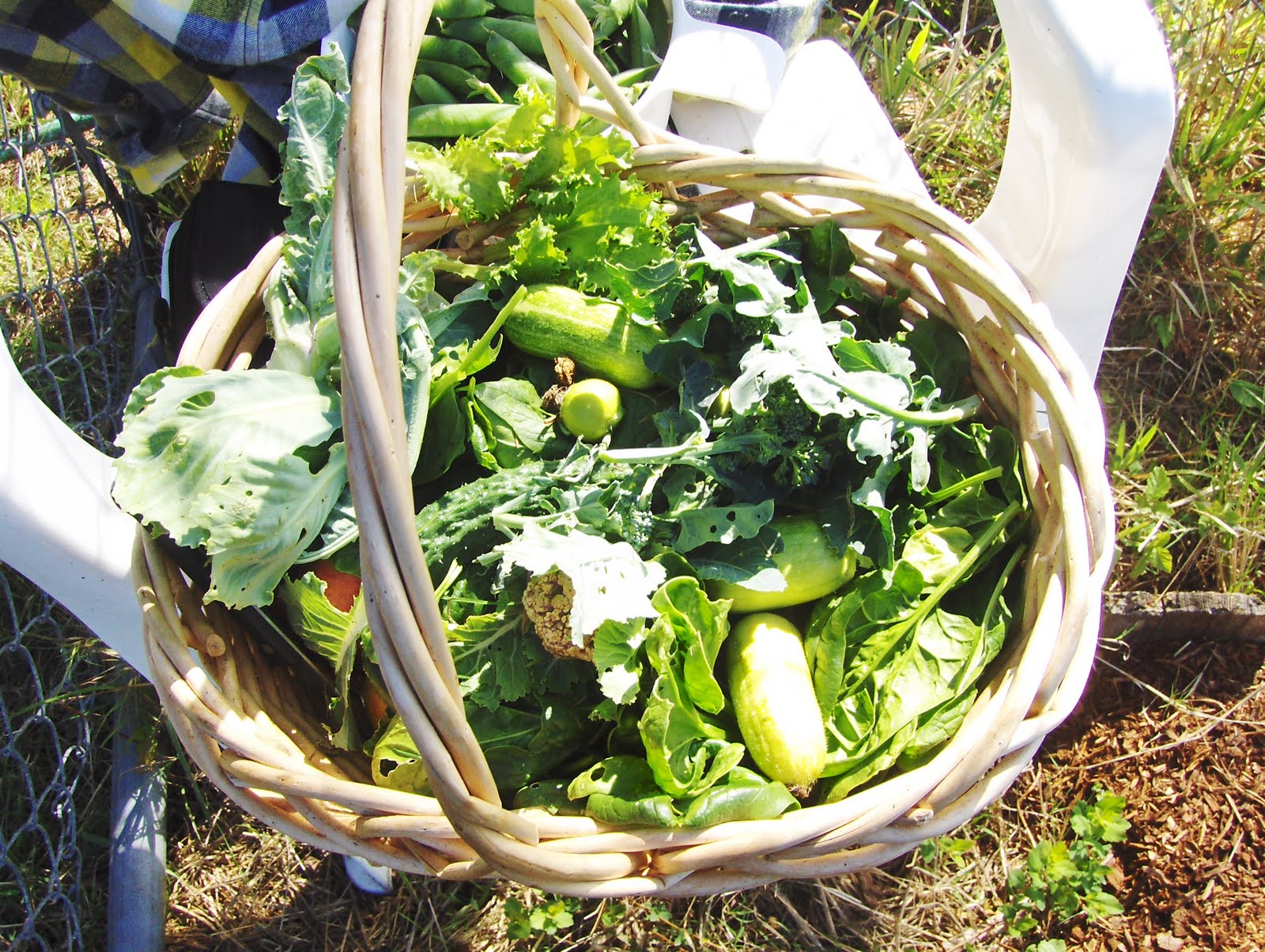Everything that is growing commercially today, that is growing for consumption, has been genetically modified. What? Yes. Hundreds of years ago, smart people began to cross pollinate wild varieties of fruit and vegetables. They wanted the taste of a ripe, sweet strawberry, for example, but also a hardiness of skin and constitution that would allow that wild thing to last the trek across the land, from its natural place, to the vending stall.
Busy hands and brains mixed and matched, and tested away for years and years before the right strawberry was finally produced in those laboratories, and later reached everyone's table, across deserts, mountains, and oceans.
In winter, here in the Pacific Northwest, as well as anywhere else on this continent and others, we can appreciate oranges and avocados and grapes from South America, and never bat an eyelash. Modifying food to taste better and be able to cross oceans did not happen accidentally.
We should be making many choices when we eat and for different reasons. First of all, we should ask ourselves if we are eating food that is closest to its natural state, just grown, and not packaged in easy to eat packages like those cut up carrot sticks we hand our children on their way to school. If food is grown locally, no extra fuel was used to arrive at the local farmers' market. If it is in season, food is fresher, adapted to local weather and soil condition and each community can be sustainable if the locals consume locally. If it still has roots and seeds and dirt around, you can be assured nobody messed with it or added sugar or a special wash to make it look bright and pretty for your eyes.
Anyone who has lived in California knows a backyard or two with wild oranges, bitter and full of pits, hardly edible by today's expectations. Many experiments were conducted at UC Riverside to come up with the best variety of juicy, sweet oranges and lemons. Let's enjoy them, and encourage our budding scientists to continue to do good science to give us tasty and healthy fruit and produce for our growing population on this ever-changing planet.
Busy hands and brains mixed and matched, and tested away for years and years before the right strawberry was finally produced in those laboratories, and later reached everyone's table, across deserts, mountains, and oceans.
In winter, here in the Pacific Northwest, as well as anywhere else on this continent and others, we can appreciate oranges and avocados and grapes from South America, and never bat an eyelash. Modifying food to taste better and be able to cross oceans did not happen accidentally.
We should be making many choices when we eat and for different reasons. First of all, we should ask ourselves if we are eating food that is closest to its natural state, just grown, and not packaged in easy to eat packages like those cut up carrot sticks we hand our children on their way to school. If food is grown locally, no extra fuel was used to arrive at the local farmers' market. If it is in season, food is fresher, adapted to local weather and soil condition and each community can be sustainable if the locals consume locally. If it still has roots and seeds and dirt around, you can be assured nobody messed with it or added sugar or a special wash to make it look bright and pretty for your eyes.
Anyone who has lived in California knows a backyard or two with wild oranges, bitter and full of pits, hardly edible by today's expectations. Many experiments were conducted at UC Riverside to come up with the best variety of juicy, sweet oranges and lemons. Let's enjoy them, and encourage our budding scientists to continue to do good science to give us tasty and healthy fruit and produce for our growing population on this ever-changing planet.


Rosaria, there is a big difference between hybridization, which is what you describe, and GMOs. GMOs are created in the laboratory combining genes from different species. Gene-splicing will never occur through hybridization. A corn plant is gene-spliced to produce poison so if a worm eats it it dies. Or if a weed grows near it, it dies. Regardless, more herbicides are used on GMOs than on hybrids. That's not something I want to eat. It is not natural that our food should exude poison or be coated in poison. The levels of chronic illness and conditions has risen commiserate with the introduction and increase of GMOs in our food supply.
ReplyDeleteI stand corrected!
ReplyDelete